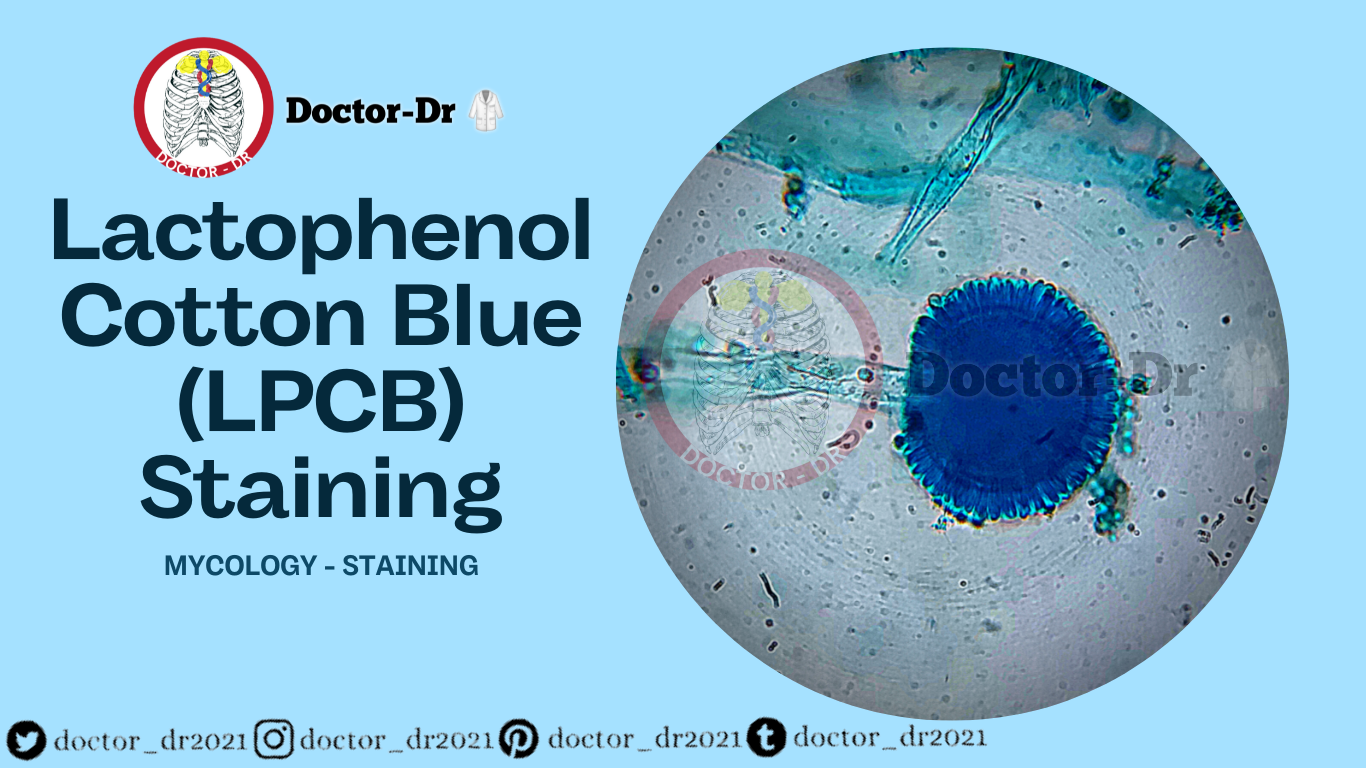A straightforward histological staining technique for the microscopic analysis and identification of fungus is lactophenol cotton blue (LPCB) staining.
Table of Contents
- Principle of Lactophenol Cotton Blue (LPCB) Staining
- Reagents of Lactophenol Cotton Blue (LPCB) Staining
- Preparation of Lactophenol Cotton Blue solution
- Procedure of Lactophenol Cotton Blue (LPCB) Staining
- Results and Interpretation
- Limitations
- Applications
Principle of Lactophenol Cotton Blue (LPCB) Staining
The idea of the Lactophenol Cotton Blue (LPCB) Staining procedure is to make it easier to identify the fungal cell walls.
- Eukaryotic fungi have features on both the macroscopic and microscopic scales.
- The chitin that makes up the fungal spore cell wall is stained for identification by the lactophenol cotton blue solution's ingredients.
- The lactophenol cotton blue solution serves as both a mounting and staining solution.
- The mixture of three primary reagents, which is clear and blue in colour, goes towards making the solution.
- Phenol: It disinfects by eliminating all living things.
- Lactic Acid: To retain the fungus' structures, use lactic acid.
- Cotton Blue: To colour or stain the chitin on the fungal cell wall and other fungi structures, use cotton blue.
- The stain will give the fungus a blue look, emphasising the hyphae and fungal spores.
Reagents of Lactophenol Cotton Blue (LPCB) Staining
A mixture of 50 millilitres of lactophenol cotton blue staining solution consists of:
- Distilled water 50ml
- Cotton Blue (Aniline Blue) 0.125g
- Phenol Crystals (C6H5O4) 50g
- Glycerol 100ml
- Lactic acid (CH3CHOH COOH) 50ml
- 70% ethanol
You should prepare the lactophenol Cotton Blue solution at least two days in advance of using it.
Preparation of Lactophenol Cotton Blue solution
The reagents are allowed to dissolve and mature for more than two days while the lactophenol Cotton Blue solution is created.
- Day 1: Dissolve the cotton blue in distilled water, then let it sit for the night. Insoluble dye is eliminated in this.
- Day 2: In a glass beaker filled with lactic acid, add phenol crystals and mix with a magnetic stirrer until the crystals dissolve while wearing safety gloves.
- Include glycerol
- Mix the phenol, glycerol, and lactic acid solution after filtering the Cotton blue and the distilled water into it.
- Store in a warm environment.
Procedure of Lactophenol Cotton Blue (LPCB) Staining
- Add a drop of 70% ethanol on a clear microscopic glass slide.
- Depending on the sample being used, add the fungal specimen to the drop of alcohol using a sterile mounter such an inoculation loop (from solid medium).
- To make sure the fungus sample mixes properly with the alcohol, tease it with a needle mounter.
- Add one or two drops of the above-prepared Lactophenol Cotton Blue Solution using a dropper or pipette before the ethanol dries up.
- Apply a clean, sterile coverslip to the stain with care, being careful not to introduce air bubbles.
- Look closely at the stain under a 40X microscope to look for fungal spores and other fungal structures.
Results and Interpretation
The backdrop has a light blue colour, while the hyphae, fruiting structures, and fungal spores are all blue in colour.
For instance,
- The hyphae and fruiting structures of Aspergillus niger have a delicate blue stain with a light blue background.
- The hyphae and fruiting structures of Trichophyton mentagrophytes are likewise stained a delicate blue with a light blue background.
Limitations
- It can only be used as a preliminary way of fungal identification that should be followed up with further diagnostic tools like biochemical and culture analysis.
- The solution itself should be utilised before it expires as well as all of its component parts.
- The remedy could alter the fungi's original shape.
- The stain cannot be utilised to distinguish between immature vegetative forms of fungus and adult mushrooms and their structures.
- The stain cannot be kept for an extended amount of time.
Applications
- used to identify samples thought to contain fungi.
- Identification of fungi and their general structures.



~1.webp)

.webp)

